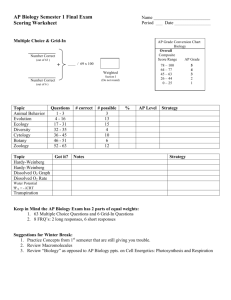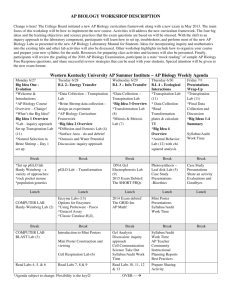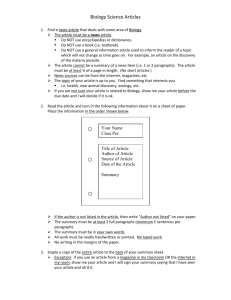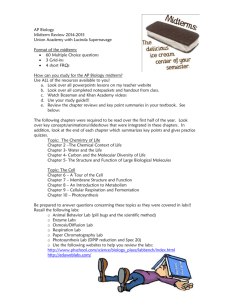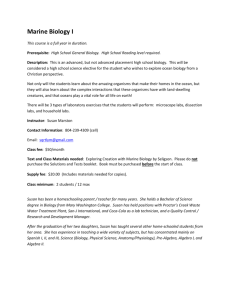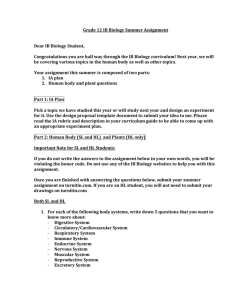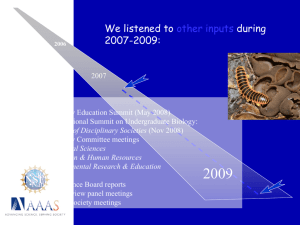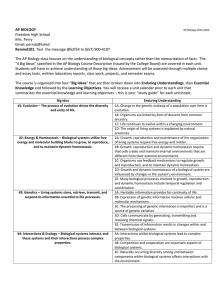the PDF
advertisement
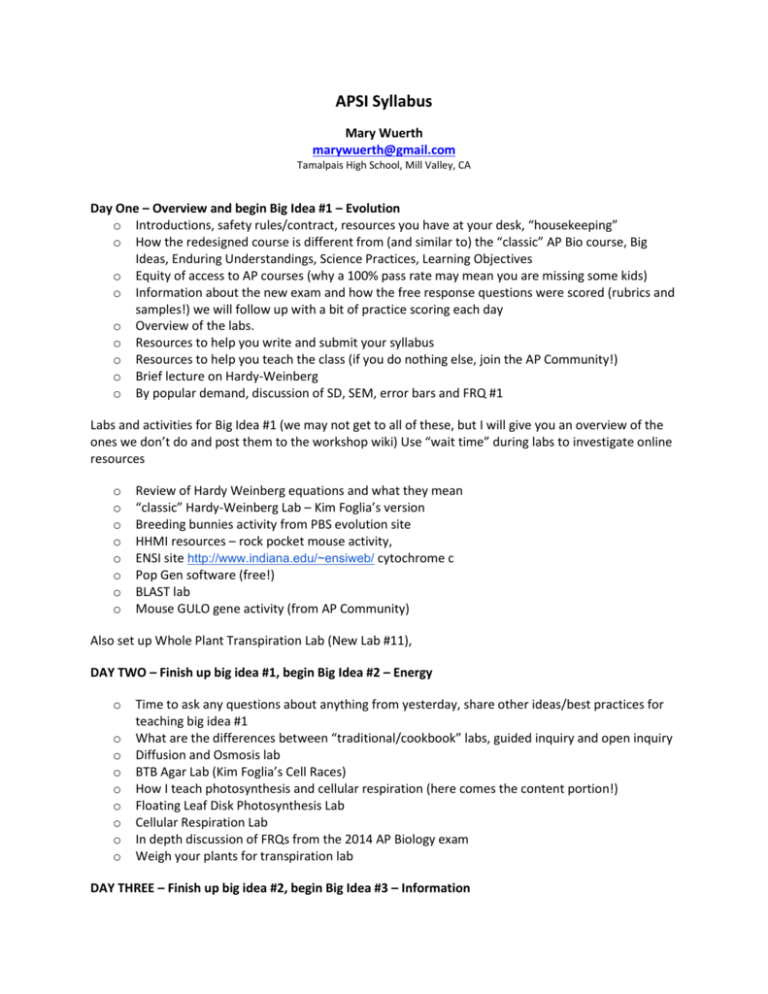
APSI Syllabus Mary Wuerth marywuerth@gmail.com Tamalpais High School, Mill Valley, CA Day One – Overview and begin Big Idea #1 – Evolution o Introductions, safety rules/contract, resources you have at your desk, “housekeeping” o How the redesigned course is different from (and similar to) the “classic” AP Bio course, Big Ideas, Enduring Understandings, Science Practices, Learning Objectives o Equity of access to AP courses (why a 100% pass rate may mean you are missing some kids) o Information about the new exam and how the free response questions were scored (rubrics and samples!) we will follow up with a bit of practice scoring each day o Overview of the labs. o Resources to help you write and submit your syllabus o Resources to help you teach the class (if you do nothing else, join the AP Community!) o Brief lecture on Hardy-Weinberg o By popular demand, discussion of SD, SEM, error bars and FRQ #1 Labs and activities for Big Idea #1 (we may not get to all of these, but I will give you an overview of the ones we don’t do and post them to the workshop wiki) Use “wait time” during labs to investigate online resources o o o o o o o o Review of Hardy Weinberg equations and what they mean “classic” Hardy-Weinberg Lab – Kim Foglia’s version Breeding bunnies activity from PBS evolution site HHMI resources – rock pocket mouse activity, ENSI site http://www.indiana.edu/~ensiweb/ cytochrome c Pop Gen software (free!) BLAST lab Mouse GULO gene activity (from AP Community) Also set up Whole Plant Transpiration Lab (New Lab #11), DAY TWO – Finish up big idea #1, begin Big Idea #2 – Energy o o o o o o o o o Time to ask any questions about anything from yesterday, share other ideas/best practices for teaching big idea #1 What are the differences between “traditional/cookbook” labs, guided inquiry and open inquiry Diffusion and Osmosis lab BTB Agar Lab (Kim Foglia’s Cell Races) How I teach photosynthesis and cellular respiration (here comes the content portion!) Floating Leaf Disk Photosynthesis Lab Cellular Respiration Lab In depth discussion of FRQs from the 2014 AP Biology exam Weigh your plants for transpiration lab DAY THREE – Finish up big idea #2, begin Big Idea #3 – Information o o o o o o o o o o Time to ask any questions about anything from yesterday, share other ideas/best practices for teaching big idea #2 Analyze Data from Diffusion and Osmosis Lab, use of math in AP Biology, with focus on water potential Cell Communication resources from HHMI Bacterial Transformation with pGLO Restriction Enyzme Analysis and Gel Electrophoresis Chi-square and M & Ms (more math here, but don’t just do chi-square on only one lab a year) pHet simulation of lac operon, ideas for modeling operons Overview of Mitosis/Meiosis Lab and some suggested alternatives In depth discussion of FRQs from the 2014 AP Biology exam Weigh your plants for transpiration lab DAY FOUR – Finish up big idea #3, do Big Idea #4 – Interactions o o o o o o o o Time to ask any questions about anything from yesterday, share other ideas/best practices for teaching big idea #3 or anything else! Meiosis and Fertilization model In depth discussion of FRQs from the 2014 AP Biology exam Acting out action potential Analysis of pGLO lab results, calculating transformation efficiency Fruit Fly behavior lab Lab tips from me and from the AP Biology consultants (the suggestions of 75 experienced AP Biology teachers compiled into one document) Time to work on syllabi/planning/investigating resources


